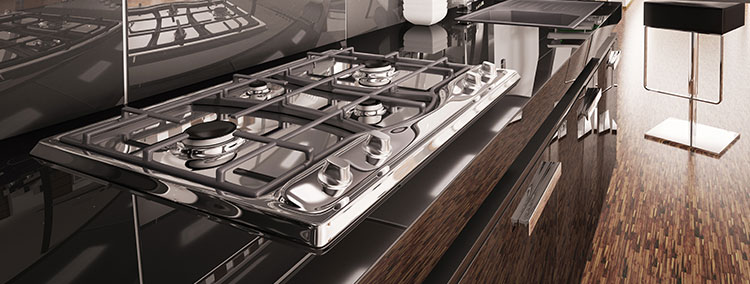
Have you just bought a dishwasher or moved to a house with a dishwasher and you have never used it before? Here is a guide given by dishwasher repair professionals on how to use a dishwasher for the first time:
Load the dishwasher
Everything begins here. After all, there is no way your dishes will get clean if you don’t load them, right?
To give your appliance an easy time, scrape any extra food from the plates before placing them in the dishwasher. Evenly space the dishes with the dirty side angled down towards the water jets, taking not to overlap the dishes, as doing so will prevent the water jets from reaching the insides for thorough cleaning.
Place the right items in the top and bottom racks for pristine cleaning.
For the top rack, load items such as cups, mugs, bowls, wine glasses, and even water bottles. Position the small bowls and plates between the tines and place the plastic container and lids on the top rack to avoid warping.
As you are placing the plastic containers, note that not all plastics are dishwasher safe, so check the bottom of your plastic ware to ensure that it’s safe.
When it comes to the bottom rack, place large kitchenware such as serving platters, dinner plates, stainless steel pots, dishwasher-safe baking dishes, and other heavily soiled dishes.
Position the pots and pans along the sides of the dishwasher or towards the back and add utensils to the dishwasher’s utensil basket. When placing the items in the basket, ensure that the sharp objects such as knives face downward, to avoid injury.
Before closing the dishwasher door, ensure that nothing is blocking the wash arms.
Load the dishwasher detergent
Once the dishes are in place and in their right racks, the next thing you should do is to load the dishwasher detergent.
While detergent dispensers vary depending on the model, you should follow the same procedure regardless of the nature and placement of the dispenser in your appliance.
Begin placing the detergent in the detergent dispenser, then add rinse aid to the rinse aid dispenser up to the point where it says full.
You should then close the lid and press firmly until it clicks shut.
You should note that the detergent you use on the dishwasher significantly impacts the results you achieve, so ensure that you use the correct one. As a rule of thumb, use detergents formulated explicitly for automatic dishwashers.
There are plenty of detergents you can use. From liquids, gels, tablets, packs to powders, you will be spoilt of choice. There is no right or wrong detergent to use—you only need to find the one that works the best for your appliance and use it.
Select a wash cycle
Now you have your dishes and detergent in place, the next task is to choose a wash cycle. Most dishwashers have at least three cycles: quick, normal, and heavy.
Quick: This cycle uses a lot of water, energy, and high temperatures, giving you fast results. Use this cycle when you have lightly soiled dishes and are in a hurry.
Normal: The normal cycle is the most commonly used, and it allows you to clean everyday messes without using extra water. Use this cycle on the day-to-day loads that aren’t heavily soiled.
Heavy duty: This cycle works best for loads that include pots, pans, and other heavily soiled items. As you might be guessing, this cycle will use a lot of water and higher temperatures.
The cycle you choose depends on the size of your load and how dirty your dishes are.
Setting a cycle is easy as all you need to do is use the buttons located on the top or front of the appliance.
Start the dishwasher
After setting up everything, the next thing you should do is to start the dishwasher. Before you fire it on, appliance repair Northern VA recommends you double-check and ensure there is nothing blocking the wash arms.
For your appliance to function optimally, ensure that the water temperature is 120ºF as it enters the dishwasher. Remember that if the water is too cold, it won’t clean the dishes as well as they should. At the same time, if the water is too hot, it might make the baked-in food harder to remove from the dishes and pots.
The post How to Use a Dishwasher for the First Time first appeared on HVAC Repair, appliance repair. The post appeared first on Express Appliance Repair